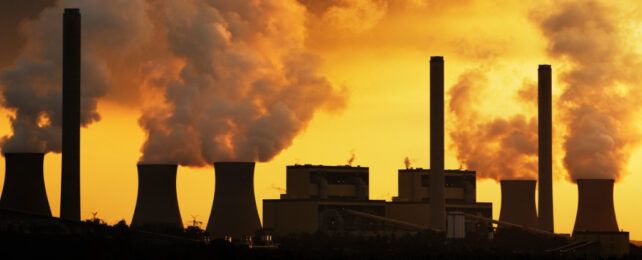
Greenhouse gas levels surged to a new record in 2023, committing the planet to rising temperatures for many years to come. CO2 is accumulating in the atmosphere faster than any time experienced during human existence.

The findings reveal that carbon dioxide (CO2) levels play a critical role in the lifespan and transmission of airborne viruses.

Australian passenger vehicles are emitting 50% more carbon dioxide (CO₂) than the average of the world's major markets. And the real-world situation is even worse than official figures show.

Starting around 60 km up, in the outermost layers of atmosphere carbon dioxide actually cools the atmosphere, causing it to shrink and contract. A cooling and shrinking MLT will lead to an increase in the longevity of space debris at higher altitudes

A company seeks to replace the non-renewable and pollutive process of creating ethylene with its new technology that uses carbon dioxide instead.

The increase in global CO2 emissions of over 2 billion metric tons in 2022 is the largest in history in absolute terms, more than offsetting the previous year's pandemic-induced decline.

The global average of carbon dioxide concentrations hit a new high of 413.2 parts per million last year, according to the WMO report. It was higher than the annual average over the last decade, despite a 5.6% drop of CO2 due to Covid.

Scientists from Scripps and the NOAA reported that levels of atmospheric carbon dioxide peaked in May, reaching a monthly average of nearly 419 parts per million.

The concentration of atmospheric CO2 surged past 420 parts per million for the first time in recorded history this past weekend, according to a measurement taken at the Mauna Loa Observatory on Hawaii.

The industrial slowdown due to the COVID-19 pandemic has not curbed record levels of CO2. Carbon dioxide levels saw another growth spurt last year past 410 parts per million on average.

The world hit another new record high for heat-trapping carbon dioxide in the atmosphere, despite reduced emissions because of the coronavirus pandemic, scientists announced Thursday.

Scientists have developed a new type of self-assembling silver membrane that could be used to capture carbon dioxide (CO2) emissions before they have a chance to spread in the atmosphere.

As the COVID-19 pandemic continues, scientists have predicted that global carbon dioxide emissions may drop by more than 5 percent in 2020—in what would be the largest fall since the end of the Second World War.

Low-carbon geopolymer cement can reduce CO2 by up to 90 percent. But it costs three times as much as the usual cement and nobody is buying it.

For the first time since humans existed on earth, carbon dioxide has exceeded 415 parts per million.